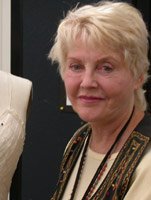Bringing Technology Into the Classroom
Teaching the next generation of designers and pattern makers the fashion business is not what it used to be, with new technologies evolving quicker than ever. But two influential teachers of the fashion trade—Kathryn Hagen of Otis College of Art and Design and Helen Joseph Armstrong of Los Angeles Trade-Technical (LATT)—are leading fashion school students into a more technologydriven industry with some new teachings.
One of the criticisms of the fashion industry is that it’s been stuck in oldschool mode and has been slow to adapt emerging technologies in the workplace, but Armstrong and Hagen are trying to change that. Hagen authors “Illustration for Designers” and Armstrong “Pattern Making for Fashion Design,” books that are used by more than 500 institutions globally, so when these women talk, people listen. Next year both will be publishing new versions that will place a greater emphasis on technology.
Hagen’s new book will be released through Prentice Hall next spring. It will be a “teched-up” version of her previous self-published edition, with 100 pages of color illustrations over 600 pages. With the evolution of CAD/CAM and advancements in illustration software such as Adobe Photoshop, Adobe Illustrator, Corel Draw and others, the art of fashion illustration is advancing to new heights.
“Ten years ago there was nothing about computers in [fashion] books. We’re trying to address that with this book,” said Hagen. She was surprised to find few if any of her competitors covering technology to a large degree, so the demand for a new book incorporating technology was high.
Hagen borrows from the old and new schools for the book. She will offer sections on how computer programs can enhance illustrations, showing examples of her own work. At the same time, Hagen will be emphasizing fundamentals.
“People think that computers can now do all the drawing, but that’s not so since you have to scan something into these programs,” she said.
The 20-year veteran of Otis teaches fashion theory, illustration and model drawing on the campus based in the California Market Center. She will also be doing the illustrations for Armstrong’s new pattern-making book, set to hit the stores next summer. The 800-page text has long been considered among the authoritative sources for pattern making. Armstrong’s new version, to be published by Prentice Hall as well, will also place greater emphasis on technology but not to the exclusion of hand arts.
“Without a background in flat pattern making and draping, it’s difficult for the learner to comprehend the process through computers. Computer pattern making is the future, and we at the fashion center [of L.A. Trade-Tech] understand that our students must be competitive not only technically but creatively,” she said.
Armstrong emphasizes the importance of pattern making to the entire garment production process: “A designer can create a wonderful sketch, but the pattern maker gives it life. A lot of designers are not equipped with these fundamentals and are not able to problem solve as a result.”
Armstrong’s fourth revised edition will include new designs with pattern interpretations, the basic foundations for menswear, fitting adjustments for pants, and the construction of jackets, fly fronts and linings.
An expanded section on CAD/CAM software will also be part of the package, offering information on the mostused systems developed by Gerber Technology and Lectra Systems as well as products by newer companies such as Los Angeles-based Tukatech Inc.
“I think they’re among the most innovative and I endorse what they’re doing with their Tukacenters [self-service CAD/CAM rental and training stores catering to students and professionals alike],” Armstrong said.
Also coming to bookstores soon are volumes on Tukatech and Gerber systems published by LATT staff members Carol Sapos and Michell Linenger, respectively.
























